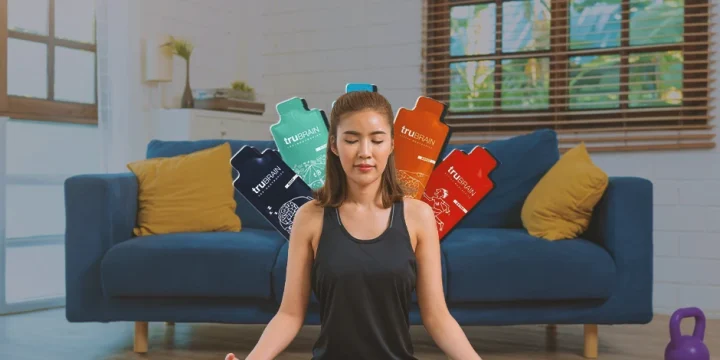Muscle imbalances are dangerous, especially if you are still young or old since older people can experience hip, knee, and back problems, preventing them from functioning normally throughout the day.
As a certified personal trainer with experience in kinesiological practice, treating postural syndromes and dysfunctions through movement, I created an easy-to-follow guide on how to fix certain muscle imbalances and why you should take care of them as early as possible.
It took me over 50 hours of research to read and compile all the relevant studies on muscle imbalances and postural disorders to create this guide, which will benefit you in the short and long run.
Quick Summary
- To correct muscle imbalances, focus on unilateral exercises, strengthen the weaker side first, tailor workout volume to this side, add extra work for it, and address mobility and flexibility for both sides.
- Muscle imbalances stem from repetitive joint movements, inadequate movement, and exercising in just one motion plane (sagittal, frontal, or transverse)
- Research by the National Institutes of Health shows muscle imbalances can lead to more injuries, joint pain, poor movement, and postural deformities.
- In my experience, addressing muscle imbalances early can significantly enhance overall physical health and performance.
Muscle Imbalance Treatment: 5 Ways to Correct Muscle Imbalance

In my experience as a personal trainer, I've found five effective ways to correct muscle imbalances, proven through my work with various clients.
These include:
- Use unilateral exercises
- Start with the weaker side
- Let the weaker side set your workout volume
- Do additional work on the weaker/smaller side
- Fix the underlying problem, i.e., mobility/flexibility
"Functional symmetry simply reflects the idea that if your strength and physique are balanced, you’ll be able to perform better and get injured less."
- Ben Pollack, Certified Personal Trainer
Additionally, ensuring a balanced diet rich in proteins, vitamins, and minerals goes a long way in supporting muscle recovery and balance.
Let's examine all these five ways of correcting muscle imbalances.
1. Use Unilateral Exercises

Research in the National Library of Medicine shows unilateral exercises are key in treating muscle imbalances from conditions like scoliosis, lordosis, and kyphosis [1].
Unilateral exercises involving one limb or body side, are crucial for athletes, enhancing core and abdominal stability. Public Library of Science One reports that this method activates necessary muscle groups for balance [2].
To correct imbalances, strengthen the weaker body side while stretching the stronger and shortened side.
For lordosis and kyphosis, which primarily affect the sagittal plane, strengthen and stretch each side separately.
2. Start With the Weaker Side
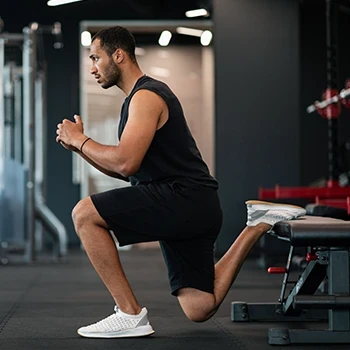
The Journal of Physical Therapy Science advises starting muscle imbalance treatment by strengthening the weaker body side [3].
For lumbar lordosis, begin with exercises like crunches to fortify the abdominal wall, essential for maintaining spine alignment.
After strengthening one side, focus on stretching the opposite, stronger side. This involves exercises like cat-camels and modified hamstring stretches, targeting the erector spinal muscles from the lower back to the neck.
3. Let the Weaker Side Set Your Workout Volume

Workout volume should be based on the weaker side's capacity, as matching the stronger side's load can be counterproductive and harmful in muscle imbalance treatment.
4. Do Additional Work on the Weaker/Smaller Side
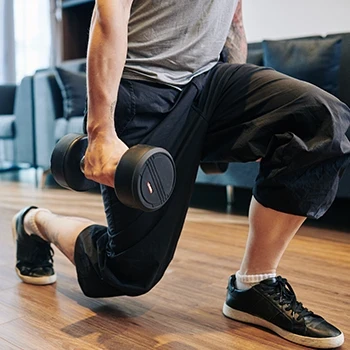
It's essential to do extra work for the weaker muscle group to achieve body balance. This can involve additional or separate workouts for the weaker side.
However, as previously mentioned, such assessments should not be self-conducted but overseen by a qualified professional. For instance, if your left hamstring is weaker, perhaps from predominantly using your right leg in football, you might do 2-3 sets of hamstring sliders with the left leg.
The specific reps and sets should be determined by a professional evaluating the strength of both hamstrings.
5. Fix the Underlying Mobility/Flexibility Problem
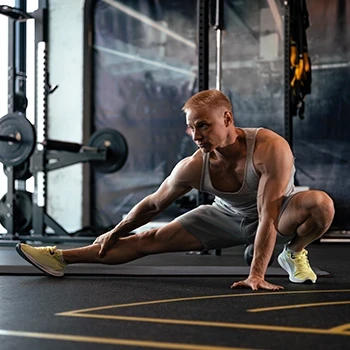
Mobility and flexibility work primarily targets the stronger, shortened side of the body, as muscle imbalances often lead to reduced flexibility in these areas, as per reports by the National Library of Medicine [4].
In the sagittal plane, this means focusing on mobility and flexibility for muscles opposite the prime movers (agonists) of a joint. Agonists initiate movement, while antagonists, located on the opposite side, facilitate this movement by stretching and relaxing.
For the frontal and transverse planes, the approach differs. Here, focus on muscles opposite the affected area, which may not always be in a direct agonist-antagonist relationship.
What Are Muscle Imbalances?

Through my experience, I've seen muscle imbalances, often caused by repetitive movements or limited activity, in a range of clients, from athletes to office workers.
These imbalances, affecting anyone, can lead to strength disparities and postural issues like lordosis and scoliosis.
There are three main stages:
- Functional stage without ligament or bone changes - Treatable through strengthening the weaker side.
- Functional stage with ligament changes but no bone alterations - Addressed by strengthening the weaker side and stretching the stronger, shortened side.
- Structural stage - Not treatable through movement or kinesiology; often requires surgery to revert to a functional stage.
The Causes

In my years of training clients, I've observed that the primary causes of muscle imbalance include:
Repeatedly Moving the Same Joints or Using the Muscles
Repeatedly moving the same joints and using the same muscles will separate your body into sectors where specific muscle groups are stronger than others.
This is almost always the case with professional athletes, occupations requiring repetitive tasks such as factory or office work and similar activities.
Lack of Movement
Lack of movement or hypokinesia is the second biggest cause of creating muscle imbalances.
Hypokinesia is the disease of the technological revolution, which forced men to move less and allowed for easier daily functioning with modern technologies but with sacrificing energy spent (effort) and movement.
Single Plane Exercises
Single-plane exercises performed in one of three planes of motion also cause muscle imbalances but also decrease joint dexterity and bone density.
Performing exercises in only one plane of motion (sagittal, frontal, or transverse) will cause muscle imbalances, lack of movement versatility, and specialization in only one type of movement with the sacrifice of others.
Issues With Muscle Imbalances
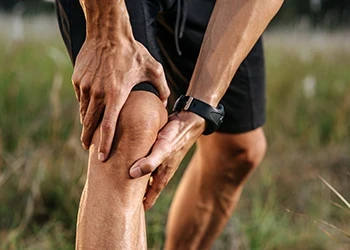
Based on my experience and reports by the National Institutes of Health, the main issues with muscle imbalances include increased injury occurrence, prolonged and frequent joint pain, poor movement mechanics, and a higher chance of developing postural deformities [5].
In addition, you are likely to experience limited mobility, poor performance, and appearance-related problems, which can affect how you see yourself and lower your confidence in social situations.
"Unilateral training — or training that mainly involves focusing on one limb — may help you even out your imbalances."
- Jesse Zucker, Certified Personal Trainer
Muscle Imbalance often has a psychological impact on the individual such as frustration or decreased motivation.
How to Know if You Have It

Identifying muscle imbalances is crucial. In my practice, I often use the following tests:
Hamstring to Quadriceps Strength Ratio Test
The general rule of balanced muscles advocates that your hamstring muscles (biceps femoris, semitendinosus, and semimembranosus) should have two-thirds of the strength of your quadriceps muscles (vastus medialis, vastus lateralis, vastus intermedius, and rectus femoris).
How to Perform Hamstring to Quadriceps Strength Ratio Test
- Go to the leg extension and leg curl machine.
- Pick a weight you can lift for five reps on each machine, using one limb (leg) at a time.
- Work up to 5 reps according to your 1RM (rep max).
- After you find your 5 rep max, rest for three minutes. Do it again.
- When you assess max on both lifts, it's time to do the math.
The math: Leg curl/leg extension x 100 = %
Do the math for both sides. The ideal result is around 60-70%.
Read More: Best Hamstring Exercises
Push/Pull Test

The push/pull test will evaluate strength imbalances between pulling and pushing muscles on your body's left and right sides.
How to Perform a Push/Pull Test
- Go to the preferred cable machine. You will be performing unilateral cable presses and rows.
- Do the warm-up with the weight you can lift for 5 reps on each lift on each arm.
- Progress by adding 5 to 10 pounds at a time per side. Rest for 2 minutes between each exercise.
- The test is finished when you can no longer lift the weight for 5 reps on both exercises on either side.
- The results will imply which side of your body is weaker and needs to be handled with a proper muscle imbalance treatment program.
Technology and Tools for Identifying Muscle Imbalances
Additionally, leveraging modern technology and tools like motion capture systems can provide a more accurate diagnosis and tailored treatment for muscle imbalances
FAQs
Can Muscle Imbalance Be Corrected?
The muscle imbalance can be corrected if the structure of the joint and ligaments isn’t changed and transformed entirely. If this is the case, you can still strengthen opposing muscle groups and other muscle groups in all three planes of motion, but it will only account for the partial range of motion in joints, meaning the flexibility and length of the muscle will ultimately be altered.
How Long Does It Take To Fix a Muscle Imbalance?
It takes 3 or 4 months to fix muscle imbalances based on postural deformities such as scoliosis, kyphosis, lordosis, knee valgus (knocked knee), knee varum (bow legs), etc. However, if your muscle imbalances are only due to an unbalanced exercise program or you are in the early stages of practicing unilateral-based sports such as tennis, it can take less than 3 or 4 months to lengthen your dominant side and strengthen the weak side.
Should I Ignore Muscle Imbalance?
You should never ignore muscle imbalances. However, if you are an elite athlete wanting to maximize performance in a given field of action, you can avoid muscle imbalances since muscular imbalance is necessary to get the best results in competitions and during competitive games.
Will Muscles Eventually Even Out?
In some cases, muscles will eventually even out. However, weak glutes from a sedentary lifestyle, shortened pectoralis due to lack of pulling motions, tight hip flexors due to an inappropriate leg workout, and sitting too much will never even, meaning you should start with an appropriate muscle imbalance program.
How Noticeable Are Muscle Imbalances?
In late structural changes, muscle imbalances are quite noticeable. Upper body muscle imbalances caused by different types of scoliosis will elevate one side of your body, making it quite noticeable when looking at the frontal plane.
What Is the Best Equipment for Correcting Muscle Imbalances?
Your weight and adjustable kettlebells are the best equipment for correcting muscle imbalances.
Adjustable kettlebells are great for unilateral exercise training routine, which is essential for correcting your muscle imbalances in all three planes of motion.
You can easily adjust the weight and make incremental progressions to strengthen one side of your body and stretch the other with a fully adjustable kettlebell weight.
I strongly advise you to read our buyer’s guide on the best adjustable kettlebells for home gym workouts in 2024 to pick the one that will help you the most with your muscle imbalance program.
Let me know what muscle imbalances you are experiencing and your plan to fix them.
References:
- https://www.ncbi.nlm.nih.gov/pmc/articles/PMC8872116/
- https://www.ncbi.nlm.nih.gov/pmc/articles/PMC5874004/
- https://www.ncbi.nlm.nih.gov/pmc/articles/PMC4483447/
- https://pubmed.ncbi.nlm.nih.gov/35771806/
- https://www.ncbi.nlm.nih.gov/pmc/articles/PMC9324710/
About The Author
You May Also Like
